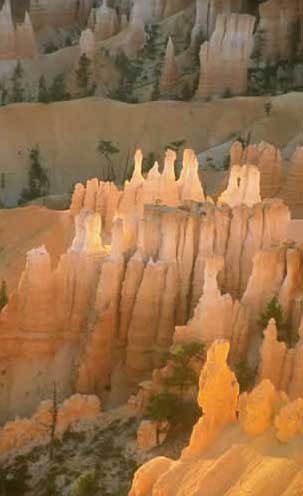







History
Panguitch was first settled by Mormon Pioneers in 1864. That first year was cold and the crops were frozen before reaching maturity. The settlers were hungry. A group of 7 men volunteered to go over the mountain to an established settlement and obtain flour to feed the starving settlers in Panguitch. They braved snow so deep, they had to abandon their wagons and walk much of the way. While walking, they would fall through the snow’s crust. But these men found a way to get through. They placed a quilt down on the snow and walked to the end of it. Then they would place another quilt down and retrieve the first quilt. By “quilt walking” the men made it to the settlement and obtained flour to bring home to feed the starving settlers in Panguitch. Their return trip was even harder, because they had to carry the flour with them back over the mountain. If you visit Panguitch in the spring, you may learn all about the “Quilt Walk” during the Annual Quilt Walk Festival. Local Quilters show the quilts they have made. Pieced quilts, embroidered quilts, both hand and machine quilted, are just some of the many heirloom quality quilts you will see displayed. You may also eat a pioneer feast and watch the story of the Quilt Walk performed by local talent.
Panguitch is a Paiute Indian word, meaning “Big Fish.” The Paiute Indians would catch “Big Fish” from the lake just above town. The name became Panguitch for both the lake and the city. The first settlement was abandoned in 1866 because of the Black Hawk Indian War. But determined settlers returned in 1871.
Part of the pioneer heritage of Panguitch can be seen in the beautiful red brick homes and buildings throughout the community. They stand as reminders of the hardy pioneers who established the settlement. The brick factory was worked by the settlers. They loaded horse drawn wagons with wood and iron rich clay, then fired the kiln with wood and made their bricks. These workers were paid with bricks, rather than money. This made it so families could build brick homes. The stately, tall homes were the first ones built outside the fort. Later the shorter two-story homes became popular. These beautiful red brick homes were influenced by both English and Dutch architectural designs. Homes were built with filigree, Dixie dormers and bay windows.
Some log cabin and wood homes are still standing around town. The Alexander Cabin was preserved by a local group and may be seen at the city park on the north entrance to Panguitch. Open in the summer season, it shows the life style of the early pioneers.
Each of the homes and buildings has a unique history. An early Sheriff, James W. Pace lived in a home on Main Street. The story is told that when federal agents came to Panguitch hunting polygamists in the dark of night, Hanna Pace, the sheriff’s wife, would light a lamp and set it in the window. This was the signal to all the men in the neighborhood to leave town or go into hiding.
Another red brick building, used for many purposes, is the Bishops Store House. First used to distribute food and clothing to the poor, it later became a school room (used for religious Seminary) and is now the Daughters of the Utah Pioneers Museum. The Social Hall is another red brick building with colorful history in Panguitch. Built to house major church meetings, the building was used for dances, fund raisers, as a gymnasium and now houses the play done each spring about the Quilt Walk.
Panguitch began as an agricultural community, but raising crops was very difficult in the cold climate. Raising sheep seemed to work better. Today, cattle are the most common site around the valley. One of the first branches of the ZCMI store was built in Panguitch. This and other stores started out as co-op groups. Later a lumber mill brought new prosperity to the community.
Today tourism is an important part of the local economy. Panguitch is in the center of some of the most spectacular scenery on earth. There are 5 National Parks: Bryce Canyon, Capital Reef, Zion, Canyon Lands and the North Rim of the Grand Canyon. Two National Monuments: Grand Staircase-Escalante and Cedar Breaks, and 1 National Recreation Area: Lake Powell are in the area. The Dixie National Forrest surrounds Panguitch. In addition, 5 State Parks and other Recreation areas include Red Canyon, Kodachrome Basin, Escalante Petrified Forest, the Anasazi Indian Village, and Calf Creek Falls are very near.
